
Windows 8
Internet Explorer
Using Internet Explorer
Internet Explorer—also known as IE—is the default web browser in Windows 8. While IE offers many of the same features you would expect to find in any browser, the simplified interface may be a little confusing at first. In this lesson, you'll learn how to use the address bar, open and move between tabs, and save your favorite websites for quick access. We'll also talk about how to clear your browsing history.
Windows 8 comes with two versions of IE, with an app for both the Start screen and the Desktop. This lesson will focus on the Start screen app. The Desktop version of IE offers a more traditional web browsing experience, as well as advanced options for bookmarking and privacy. Check out our lesson on Getting Started with the Desktop to learn more about using Desktop apps.
Getting started with IE:
- To open IE, locate and select Internet Explorer on the Start screen. IE will appear.
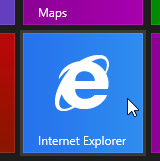 Opening IE
Opening IE
Click the buttons in the interactive below to become more familiar with the IE interface.
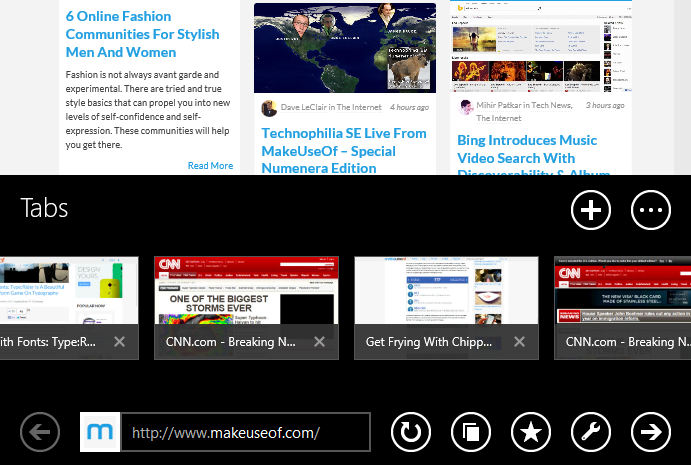
Back Button
Click the Back button to move backward in your browsing history.
Address Bar
Right-click the mouse to see the address bar, which you'll use to navigate to a website or conduct a web search. Frequently visited sites and suggestions will appear as you type.
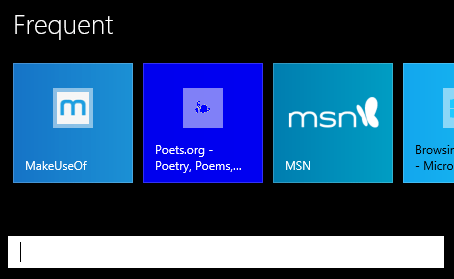
Refresh Button
Click the Refresh button to reload the current page.
If a webpage doesn't load properly, the Refresh button will change temporarily to the Stop button. Click this button to stop a webpage from loading.
Tabs Buttons
Click the Tabs button to view all open tabs.
Favorites Button
Click here to access the Favorites bar, where you can view and add favorites. You can also pin websites to the Start screen.
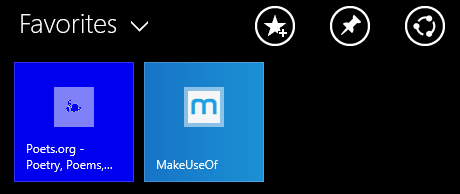
Page Tools Button
Click the Page tools button to search for content on the current page, view downloads, or open the Desktop version of IE.
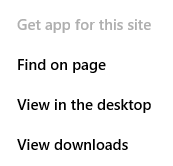
Forward Button
Click the Forward button to move forward in your browsing history.
Tabs
You can open multiple websites at the same time using tabs.
Right-click the mouse to see tabs that are currently open.
To close a tab, click the Close Tab button in the corner of each open tab
New Tab Button
Click here to open a new tab.
Tab Options Button
Click here to to reopen a closed tab or to open an InPrivate window. An InPrivate window will not track your browsing history.

Tabs Bar
Whenever you are interacting with a website, the tabs bar and address bar will disappear.
To re-open them, just right-click anywhere on the screen, or swipe up from the bottom if you're using a touch-screen.
The address bar
The Internet Explorer address bar allows you to navigate to websites and search the web. As you enter a search term or URL, the address bar will offer suggestions for webpages and search terms, which makes navigating the Web faster and easier.
To use the address bar:
When you right-click anywhere on the screen, the address bar will open.
- Navigating to a website: Type a URL in the address bar and press Enter on your keyboard.
 Typing in a URL
Typing in a URL - Searching the Web: Type a search term in the address bar and press Enter.
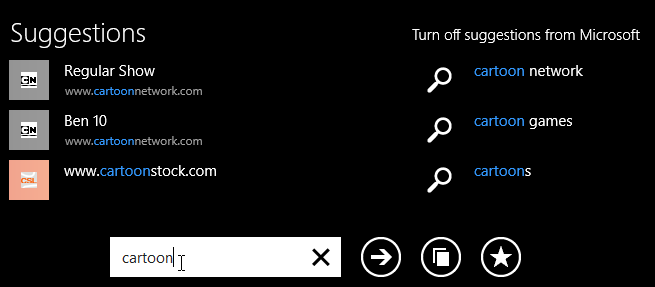 Entering a search term
Entering a search term - Suggestions: As you type in the address bar, suggestions will appear. You can click one to use a suggested address or search term.
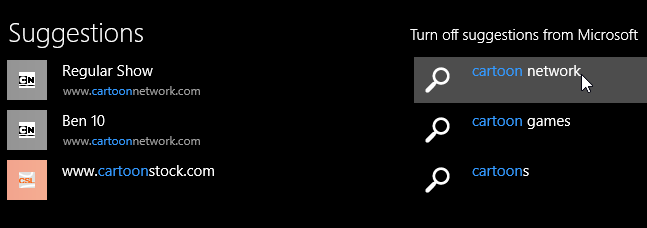 Selecting a suggestion
Selecting a suggestion
If you don't want the browser to suggest search terms as you type, click Turn off suggestions from Microsoft.
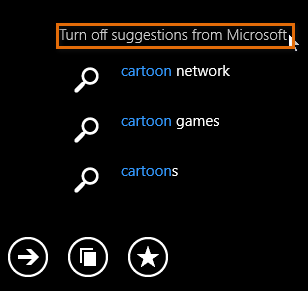 Turning off suggestions
Turning off suggestionsTabs and windows
Internet Explorer allows you to open multiple websites using tabs. You can also open websites in a new window to view different sites side by side.
To open a new tab:
- Right-click anywhere in the screen to open the Tabs bar.
- Select the New Tab button. Alternatively, press Ctrl+T on your keyboard. A new tab will appear.
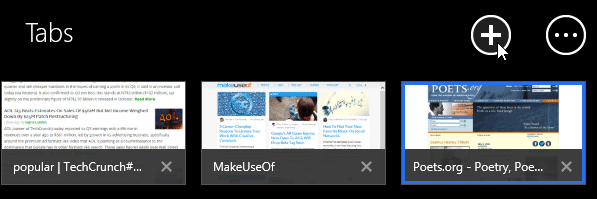 Selecting the New Tab button
Selecting the New Tab button - Type a URL in the address bar and press Enter, or select a frequently visited site to navigate to a new page.
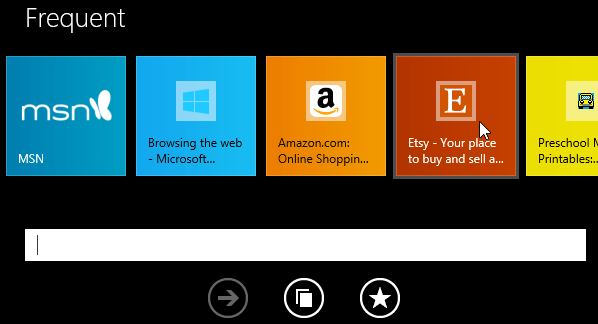 Selecting a frequently visited site
Selecting a frequently visited site - The page will appear in the new tab.
 The new tab
The new tab
To switch between tabs:
- Right-click to open the Tabs bar, and then select the desired tab.
 Selecting a tab
Selecting a tab - The tab will be selected.
 The newly selected tab
The newly selected tab
To close a tab:
- Select the Close tab button on the desired tab in the Tabs bar.
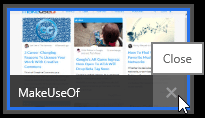 Selecting the Close tab button
Selecting the Close tab button
To view two windows side by side:
- Open the desired websites as tabs.
- Right-click a tab and then select Open tab in new window.
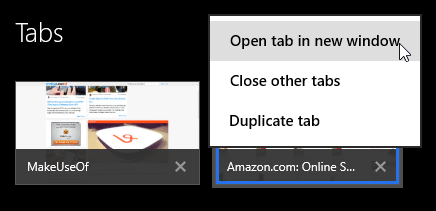 Selecting Open tab in new window
Selecting Open tab in new window - The websites will appear side by side.
 Viewing websites side-by-side
Viewing websites side-by-side
To open a link in a new window:
- Right-click the desired link, then select Open link in new window.
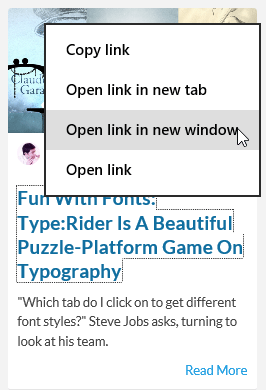 Opening a link in a new window
Opening a link in a new window - The websites will appear side by side.
To close a window, click the top of the browser window and drag it to the bottom of the screen.
Favorites
If you find a website you'd like to visit later, you can add it to your favorites, which most browsers call bookmarks. You can also pin a site directly to the Start screen.
To add a favorite:
- Right-click anywhere on the screen to open the address bar, then select the Favorites button. The Favorites toolbar will appear.
 Accessing the Favorites toolbar
Accessing the Favorites toolbar - Select the Add to favorites button.
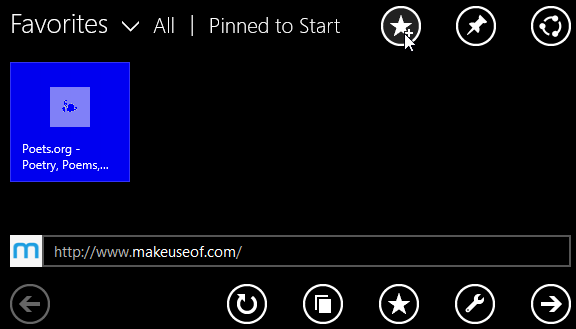 Selecting the Add to favorites button
Selecting the Add to favorites button - A dialog box will appear. Click the drop-down menu to select a folder for the website, then click Add to save the site as a favorite.
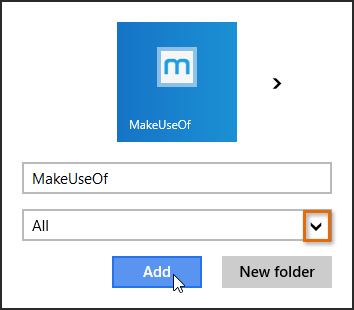 Clicking Add to save the favorite
Clicking Add to save the favorite
You can also press Ctrl+D on your keyboard to add a site to your favorites.
To pin a website:
When you pin a website, Internet Explorer will create a shortcut for it, which will appear on your Start screen. Unlike favorites, pinned websites don't require you to navigate to the browser to view them.
- Navigate to the website you wish to pin. Right-click and then select the Favorites button from the address bar menu.
- The Favorites toolbar will appear. Select the Pin site button.
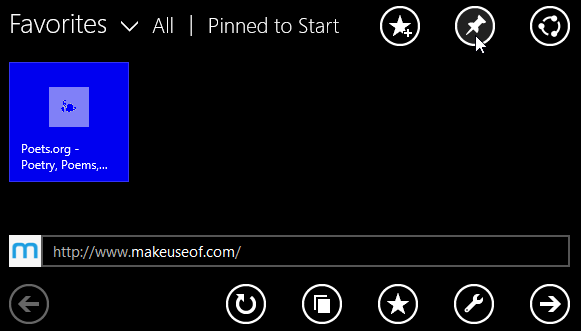 Selecting the Pin Site button
Selecting the Pin Site button - A dialog box will appear. Click Pin to Start.
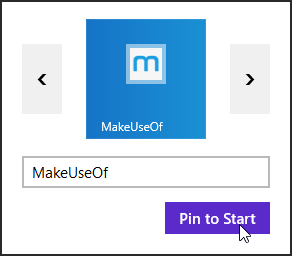 Clicking Pin to Start
Clicking Pin to Start - The website will be pinned to the Start screen.
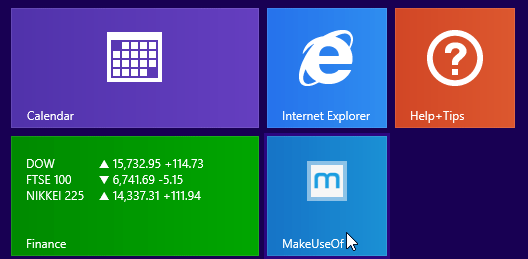 The pinned website
The pinned website
Privacy and security
Like all browsers, IE keeps a browsing history for the websites you visit. You may want to clear your browsing history periodically for the sake of privacy.
To delete browsing history:
- Hover the mouse in the lower-right corner to access the Charms bar, then select Settings.
 Selecting Settings
Selecting Settings - The Settings pane will appear on the right. Select Options.
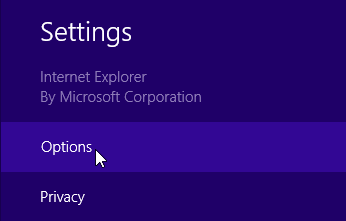 Selecting Options
Selecting Options - The Internet Explorer settings will appear. Locate and click the Select button under History.
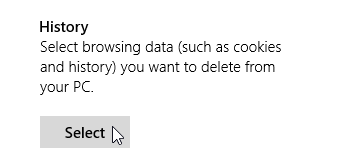 Clicking the Select button
Clicking the Select button - A dialog box will appear. Select the browsing data you want to delete, then click Delete.
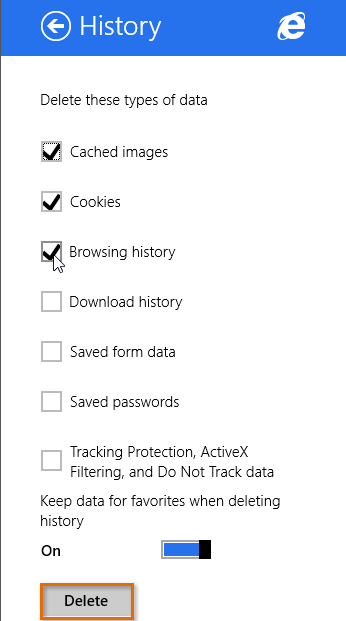 Deleting browsing history
Deleting browsing history